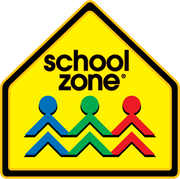Heat up the cocoa, cue up the carols, and be fa-la-la-la inspired to go "most meaningful" with presents.
By all accounts and measures, dollars aren't going as far as they did last holiday season. In late October, Megan Cerullo, in a report titled "Americans Expected to Give Fewer Gifts This Holiday Season," for CBS News, noted that "Because overall product prices are up about 10%, shoppers are likely [to] make fewer purchases and give fewer gifts, while spending roughly as much as they did collectively last year."
For not much more than the cost of a couple candy bars, 3-packs of seasonally themed mini board books make adorable stocking stuffers for the littlest learners. The packs include Readiness Mini Board Books - Shapes, Colors, and Patterns; Early Reading Mini Board Books - Alphabet, Three-Letter Words, and Picture Words; and Early Math Mini Board Books - Numbers, Counting, and Try-n-Spy 1-2-3. Each 3-pack provides holiday-themed learning fun and introduces readiness skills to toddlers and preschoolers.

For just 50 cents more, 4 slender workbooks from the Little Busy Book™ series add to the festive learning fun: Jolly Mazes, Jolly Color By Number, Jolly Hidden Pictures, and Jolly Dot-to-Dots.
December 21 is Crossword Puzzle Day. What a great opportunity for creating a lifetime hobby that builds multiple skills; crosswords expand vocabulary, develop deductive reasoning skills, and help sharpen focus and concentration too. My First Crosswords Grades 1-2 Workbook can get them started. The Activity Zone® Crosswords Workbook is geared toward the same age range, and another Activity Zone workbook, Crossword Challenges, moves up to ages 8+.

Anywhere Teacher, School Zone's online learning program, though designed primarily for ages 2-8—with guided learning paths for P, K, and 1—has some terrific new-release activities, with others just around the corner, that kids up to third or fourth grade will enjoy. They include beautiful videos on the life cycles of frogs and monarch butterflies and flash cards about space, insects, and the weather, as well as a set about recognizing and dealing with emotions. A monthly subscription at AnywhereTeacher.com is just $6.99, and multiple kids in a household can be using it at the same time on different devices.
Give (and make) gifts of crafty creativity

Remember construction paper garlands? Easy peasy! Cut red and green construction paper into strips as wide as you want. Tape or glue the ends of one to make a circle, and then run the next strip through it before taping/gluing. Continue on until the garland reaches the desired length or you run out of paper!
Has it been awhile since you made paper snowflakes? Instead of trying to remember how to fold and where to cut, go to Good Housekeeping's "How to Make Easy Paper Snowflakes" tutorial by Mariah Thomas. It even offers directions for both classic paper snowflakes and 3D paper snowflakes. This is a great activity for developing kids' hand-eye coordination, fine motor skills in general, and scissor skills (using children's safety scissors!) in particular, a school readiness skill that also involves bi-lateral hand coordination.
Last year Country Living posted "31 Best Christmas Crafts for Kids That You'll Love Making with Them," compiled by Katelyn Lunders and Chloe Gorman. They include a jingle-bell swag, paper plate Santa Claus, pine cone Christmas tree, handprint Santa and reindeer, and many more.
Give gifts of time and togetherness
During the holiday hub-bub, the idea of carving out time can elicit "easier said, than done!" for sure. After all, a day can only hold so much. Yet time together is irreplaceable.
Spending one-on-one time with kids makes them feel special, can reduce stress and build resiliency, and provides a chance to learn kindness and social skills. They will also often open up about what's really going on with them.
Kelly Holmes is an author and certified parent educator. In a post titled, "The Most Meaningful Gifts for Kids Who Have Everything," for her Happy You Happy Family blog, she says her family follows the four-gift tradition: "Something you want, something you need, something to wear, and something to read." Holmes also notes the importance of "experience gifts." She writes, "You may have also heard these referred to as activity gifts, unstuff gifts, or in the case of kids—non-toy gifts."
They include things such as coupons or certificates to "redeem." An example would be setting a date once a month for one-on-one time with you. She also offers a link for a free printable coupon book for kids. They can redeem the coupons for things like staying up 30 minutes late at bedtime or camping out in the living room. She describes that when her daughter learned what mom was making, she chimed in with her own ideas for coupons that included "pick anything you want for dinner one night," "a mother-daughter mental health day off school or work," or "…bake any dessert together."
With a little prompting, your kids probably have this kind of wish list too! Why not ask?












